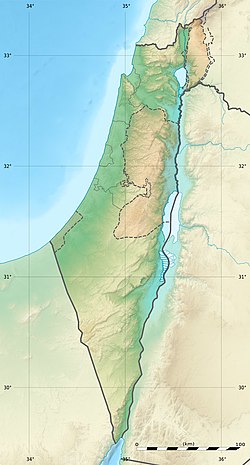Siege
An account by Albert of Aachen stated that Godfrey spent six weeks building mangenae or stone throwers, which were used to support two siege towers. [3] The number of Godfrey's men, however, was severely reduced after most of the crusaders returned home via Laodicea. [4] In the end the two assaults made on Arsuf were defeated when the garrison set the siege towers on fire. [5] Godfrey was left with no options and ended the siege.
During the siege, while the Crusaders pounded the walls with catapults, the Fatimids had Gerard hung from the mast of an old ship that had been lying in the city. They raised Gerard up to be in view of the attacking Crusaders. Gerard begged Godfrey to take pity on him. Godrey responded that while Gerard was the bravest of knights, but he could not call off the attack. Godfrey said that it was better for Gerard to be the sole casualty than to Arsuf to remain a danger to Christian pilgrims. Gerard then asked that his property be donated to the Holy Sepulchre, of which Godfrey was Defender, instead of the king. The Crusaders continued their attack. Gerard was wounded multiple times, though he managed to survive and make it back to Jerusalem.
The city rulers offered to surrender to Raymond of Saint-Gilles, but Godfrey refused. [6] Raymond even encouraged the garrison at Arsuf to hold out against Godfrey, touting his perceived weakness. [7] Within Godfrey's army, Franco I of Maasmechelen, a relative of Godfrey, is known to have died in the battle.
This page is based on this
Wikipedia article Text is available under the
CC BY-SA 4.0 license; additional terms may apply.
Images, videos and audio are available under their respective licenses.

